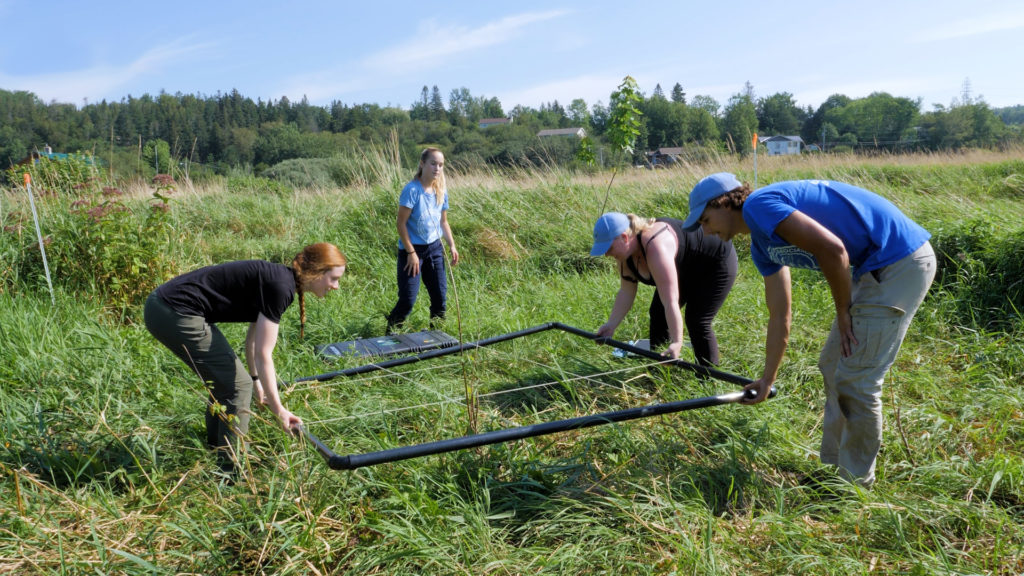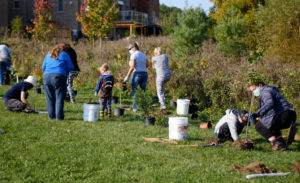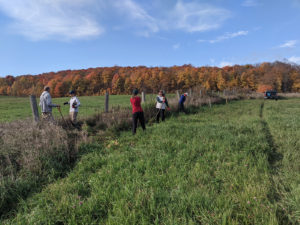One year, big impact: 90,000 trees, shrubs planted and 160 hectares restored in first year of Nature and Climate Grant Program
Habitat loss is driving the continuing decline of species at risk and worsening climate change by releasing carbon stored in nature.
The solution is meaningful, measurable restoration efforts. For real world examples of the long-term impact this kind of work has, look no further than the inaugural grantees of our $2-million Nature and Climate Grant Program (NCGP).

Presented in partnership with Aviva Canada and developed to help fund community-led projects that fight the biodiversity and climate crises at the same time, the NCGP is part of WWF-Canada’s ambitious goal to restore one million hectares by 2030. Let’s take a look at what we were able to accomplish in year one.
Celebrating the first year of fieldwork
Over the 2021/2022 season, nearly $500,000 was granted to help communities and on-the-ground organizations deploy nature-based solutions, from the wetlands of the Wolastoq valley, NB, and the shores of Vancouver Island, BC, to the farmlands of Quebec and Ontario.
The seven grantees collectively restored over 160 hectares of degraded wetlands, grasslands, shorelines and agricultural areas.
The Hammond River Angling Association (HRAA), a watershed group in Nauwigewauk, NB, planted native shrubs along Palmer Brook. With their many stems, the plants regenerate easily and produce flowers, fruits, and nuts for wildlife while laying deep roots to strengthen the banks and sequester carbon in the soil. (The grant program also enabled them to analyze future carbon sequestration potential through soil core sampling.)

Meanwhile, Credit Valley Conservation in Halton Hills, ON, mobilized field staff last summer to plant 200 native trees and shrubs in Hungry Hollow Ravine, a steep slope and difficult terrain that would have been too treacherous for volunteers.
And once pandemic restrictions lightened, they were able to safely bring back public participants.
In total, nine tree planting events and four invasive species removal events engaged nearly 250 people, planted 980 new trees, and transformed 1.2 hectares of land.
ALUS, a charity originally known as Alternative Land Use Services which helps establish diverse habitats on agricultural land, helped one farm in Chatham-Kent, ON create three acres of native grassland, which, in concert with a hardwood forest on their land, provides a resilient new habitat for local wildlife.
Over in Outaouais, QC, they helped several other farms plant native trees and shrubs to act as windbreaks and capture water to fight droughts while storing carbon, as well as hosting community outreach events to inspire future restoration efforts.

Over the field season, ALUS restored and enhanced over 26 hectares of biodiversity hotspots for at-risk species such as eastern meadowlark and bobolink birds as well as eastern milksnake and spotted gar, a lake fish.
What’s next?
All told, the Nature and Climate Grant Program’s first year saw around 4,000 people plant nearly 90,000 trees and shrubs to improve habitat and sequester carbon as they grow, supporting more than 70 populations of species at risk.
These restoration projects also made communities more resilient to climate impacts like flooding, directly benefitting over 100,000 people, and led to 25 jobs.
Now, with an additional $1.2 million investment from Aviva Canada, we’re growing the program to accept multi-year projects so we can make an even bigger impact in year two.
Read More: Nature and Climate Grant Program
Sowing change: How Canadian farmers are addressing the biodiversity and climate crises
Q&A: How agriculture can drive restoration
Act Locally: How to make your yard more nature-friendly with native shrubs
Act Locally: How to De-Pave Your Property
Restoring Utopia: How one group’s watershed work helps wildlife and hinders climate change
Meet 6 groups restoring biodiversity (and storing carbon) across the country


